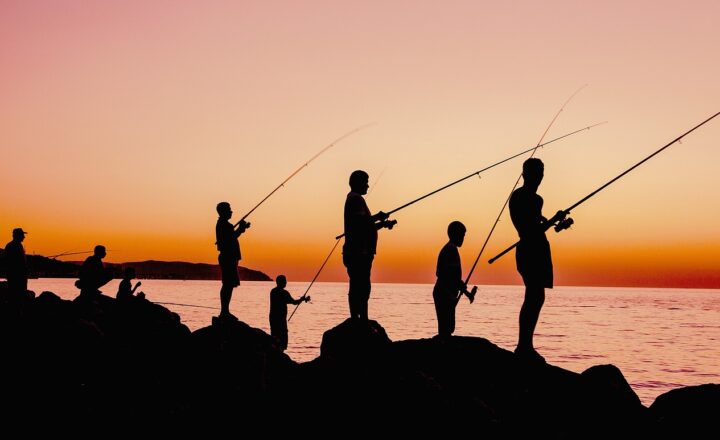Beneath the Surface: The Surprising Science of Fishing and Its Impact on Marine Life
November 17, 2024

Fishing is more than just a leisurely activity or a competitive sport; it is a complex interplay of ecology, technology, and human behavior. As one of the oldest practices known to humanity, fishing has evolved dramatically over centuries, deeply affecting marine ecosystems and the livelihoods of communities around the globe.
In this article, we will explore the science of fishing, focusing on its historical significance, modern practices, and the implications it has on marine life and biodiversity.
1. A Brief History of Fishing
Fishing dates back to the dawn of humanity, with archaeological evidence indicating that early men and women engaged in catching fish as a source of food. Ancient fishing methods varied widely, from simple hand-gathering and spearing to more sophisticated techniques such as netting and trapping.
The historical significance of fishing is profound. Communities reliant on this practice have developed intricate cultural traditions and rituals surrounding it. From the Native American tribes who practiced sustainable fishing techniques, to the Chinese who pioneered aquaculture over 2,000 years ago, fishing has shaped civilizations and economies.
Today, global fishing is both a significant economic sector and a source of food for billions, with approximately 3 billion people relying on fish as a primary source of protein. However, with advancements in technology and the rise of commercial fishing, significant challenges have arisen.
2. The Science Behind Fishing Techniques
The techniques employed in fishing have transformed dramatically due to advancements in science and technology. Understanding the behavior and biology of fish has led to more effective, and sometimes controversial, fishing strategies.
Some common fishing methods include:
- Trawling: This industrial technique involves dragging a net behind a boat through the water to catch fish. While efficient, it can lead to significant bycatch and ecological disruption.
- Longlining: A line is deployed with hundreds or thousands of baited hooks. This method is notorious for the unintended catch of seabirds, turtles, and other marine species.
- Catch and Release: Popular among recreational anglers, this method involves catching fish and releasing them back into the water. While noble in intent, it requires careful handling to minimize the stress and injury to fish.
Each technique has its own ecological footprint, influencing marine populations and the balance of aquatic ecosystems.
3. The Impact of Overfishing and Environmental Changes
One of the most pressing issues in modern fishing is overfishing. Overexploitation of fish stocks threatens both biodiversity and the health of oceans around the world.
According to the Food and Agriculture Organization (FAO), around 34% of global fish stocks are overfished, meaning they are being harvested at rates faster than they can replenish. This overfishing leads to:
- Decreased fish populations leading to collapse of certain species.
- Disruption of the marine food web as predator-prey interactions become unbalanced.
- Economic challenges for communities that rely on fishing as their main source of livelihood.
Additionally, environmental changes, such as climate change, habitat destruction, and ocean acidification, further exacerbate the challenges facing marine life. Higher water temperatures affect fish migration patterns, leading to clashes between commercial and recreational fishers as they compete for dwindling stocks.
4. Sustainable Fishing Practices
In response to the issues posed by overfishing, there has been a growing movement towards sustainable fishing practices designed to conserve marine ecosystems while still allowing fishing activities. Some of the key sustainable practices include:
- Marine Protected Areas (MPAs): Designating specific regions of the ocean where fishing is restricted or managed to allow fish populations to recover and thrive.
- Selective Fishing Techniques: Focusing on methods that minimize bycatch and reduce impact on vulnerable species, such as employing circle hooks designed to catch target fish while causing less harm to others.
- Community-Based Management: Engaging local communities in fishery management, which recognizes their historical knowledge and connects socioeconomic well-being with marine conservation.
These sustainable practices seek to balance human consumption with ecological health, ensuring that future generations can also benefit from marine resources.
5. The Role of Technology in Future Fishing
Innovation in technology is set to revolutionize the fishing industry further. Here are some notable advancements:
- Data Analytics and AI: Utilizing data to predict fish movements and manage stocks based on real-time ecosystem dynamics.
- Eco-Friendly Gear: Development of nets and lines that reduce bycatch and are biodegradable, minimizing the impact on marine life.
- Blockchain for Traceability: Using blockchain technology to ensure sustainable practices and transparency in the seafood supply chain, helping consumers make informed choices.
By investing in innovative technologies, the fishing industry can improve its impact on marine life and promote sustainability without sacrificing productivity.
Conclusion
Fishing is an essential component of human culture and sustenance, deeply intertwined with the health of marine ecosystems. As we delve into the science behind fishing, it is clear that both the techniques utilized and the impact of our actions carry significant weight. The need for sustainable practices is more critical than ever, as overfishing and environmental changes threaten marine biodiversity.
Through education, community involvement, and technological advancements, we can learn to manage our fishing practices in a way that respects and preserves marine life. By doing so, we ensure a balanced approach where humanity can benefit from the ocean’s bounties, while protecting the very ecosystems on which we rely. Understanding the surprising science behind fishing is not just about the activity itself, but about embracing a future where both fish and fishermen can thrive.








